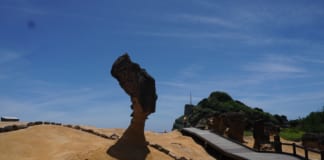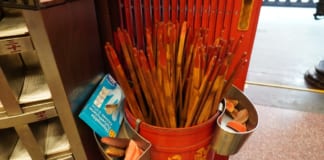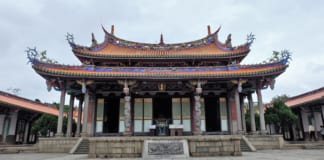Mazu is an important sea goddess in Chinese religion and is worshiped by anglers and sailors. She is particularly revered in several East Asian countries, especially in Taiwan.
There are many legends about Mazu. According to lore, she was born in March, so people chose March to hold a festival to honor her. She could read at the age of 8, and she followed Buddhism at the age of 11. Then, she attained enlightenment and had magical powers at 13. One day, her father and two brothers sailed the sea and met a big storm. At that time, she was weaving cloth next to her mother at home. She went into a trance to save her father and two brothers. However, her mother called out to her, and she could only hold two people. From that, every time boats at sea are in trouble, people pray and call her name. Nowadays, she is worshipped under various other names and titles.
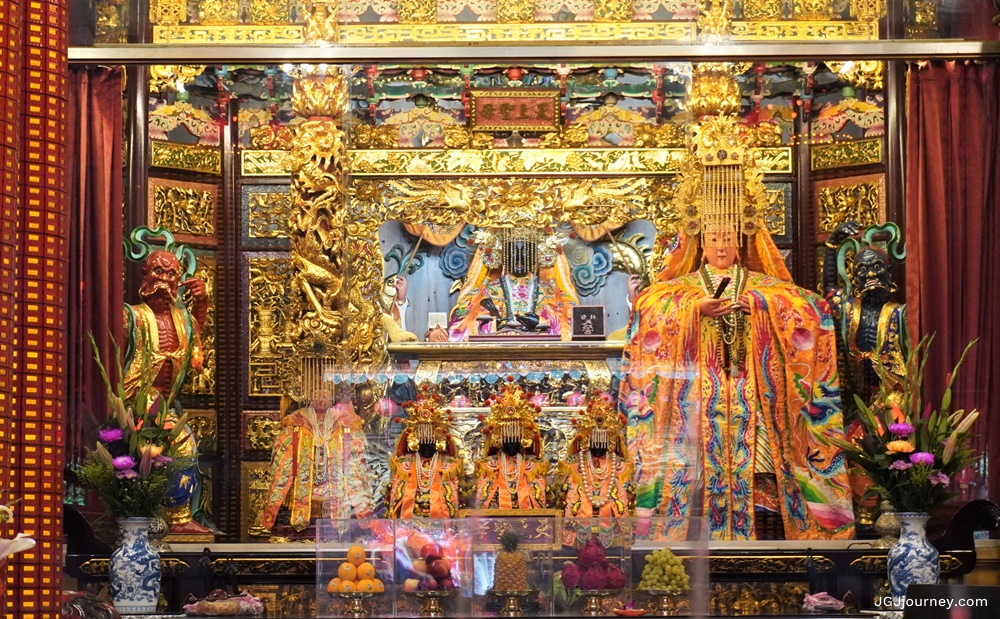
From Fujian, Mazu’s inspiration spread to neighboring coastal areas and followed in the footsteps of Chinese migration to many countries. Where there are Chinese people, usually there will be Mazu temples. With the migration of the Chinese between the 17th and 20th centuries, Mazu worship continued to spread to Vietnam, Malaysia, and other Asian countries. Mazu is considered the guardian deity of the seas, so she is one of the most widely worshiped deities in the overseas Chinese community, which departed by sea. There are more than 1,500 Thien Hau temples in 26 countries around the world.
In Vietnam, Thien Hau (Tianhou) temples, called Mazu, often appear in urban areas with Chinese immigrants, stretching from the North to the South, so the worshiping belief is still intact. The temple’s architecture reflects Chinese culture, with typical ceramic statues decorated on the temple roof. Usually, the two sides of the temple are the assembly hall and school, where Chinese immigrants come to meet, talk, connect with the community and teach children.
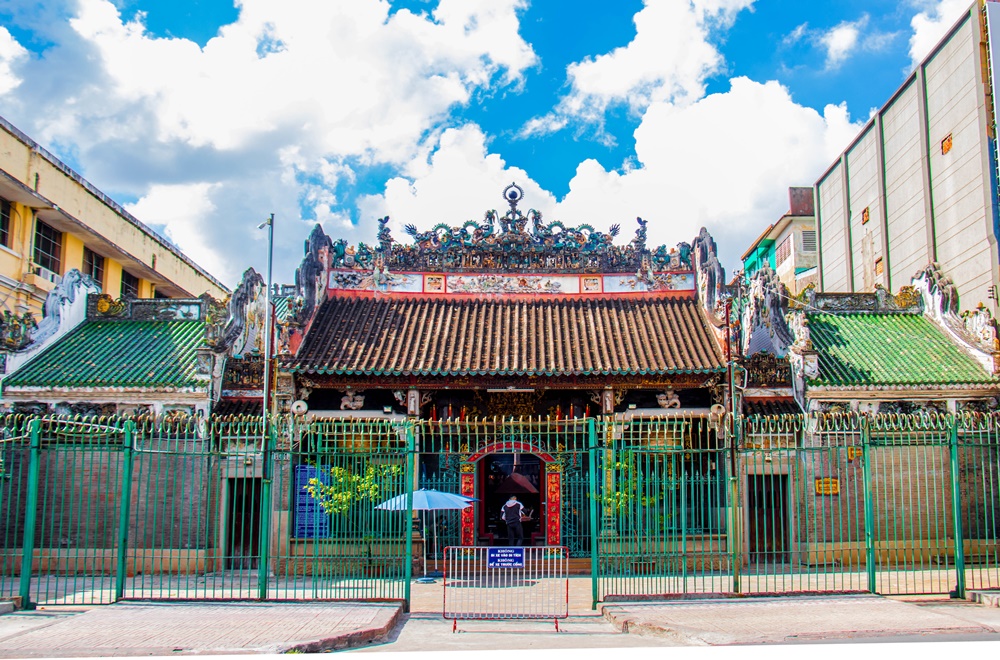
Thien Hau Temple in China Town (Cho Lon), Saigon, is a good example. Saigon was a prosperous city called the Pearl of the Far East in history. Therefore, it was also where people from many countries came to live and do business. Thien Hau Temple (天后廟) was built in 1760 by a Chinese group from Guangdong Province. It was restored many times and was recognized as a national architectural and artistic relic in 1993.
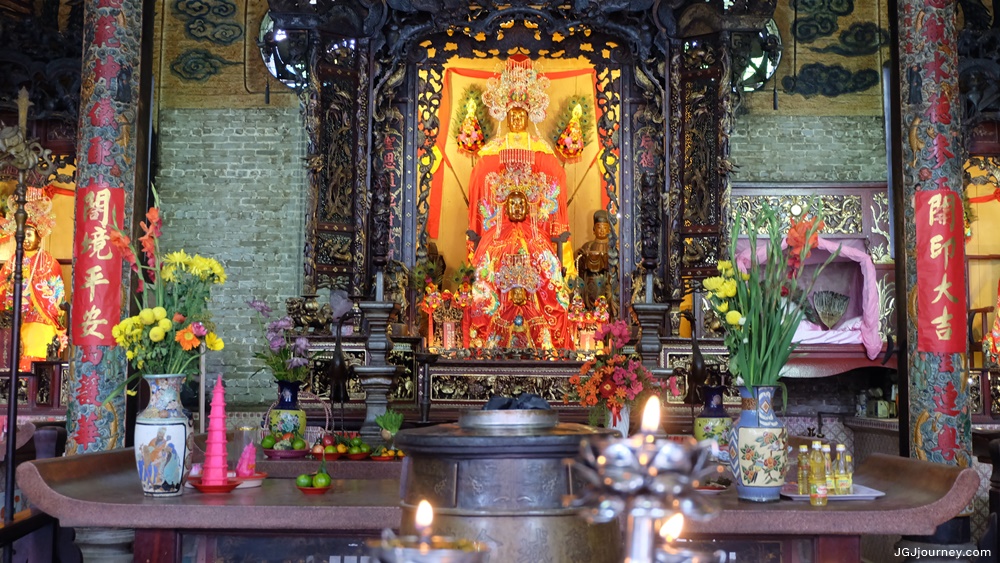
The temple was designed into four linked pavilions forming character 國. Tue Thanh Assembly Hall and the school are located on both sides of the temple. The temple’s roof is decorated with ceramic patterns with scenes of two dragons and jade, fairies, etc. The front hall worships the door god and has a stone stele and pictures inscribed with the legend of Mazu. The Central hall has a wooden palanquin gilded with vermilion and used in the festival. The post hall divides into three parts, and the main part is central to worshiping the ancient wooden Mazu statue. The rest are for other deities. All the statues are dressed in splendid embroidery. The temple has preserved many precious antiques, including a giant ancient bell under the Qianlong dynasty in 1795 and the other bell in 1850. Notably, all construction materials for the temple were imported from China. It proves that the Thien Hau temple has been significant to the Chinese community in Saigon. People often come here to pray for luck, fortune, and peace. They often write their wishes on paper and hang them along with circle incense.
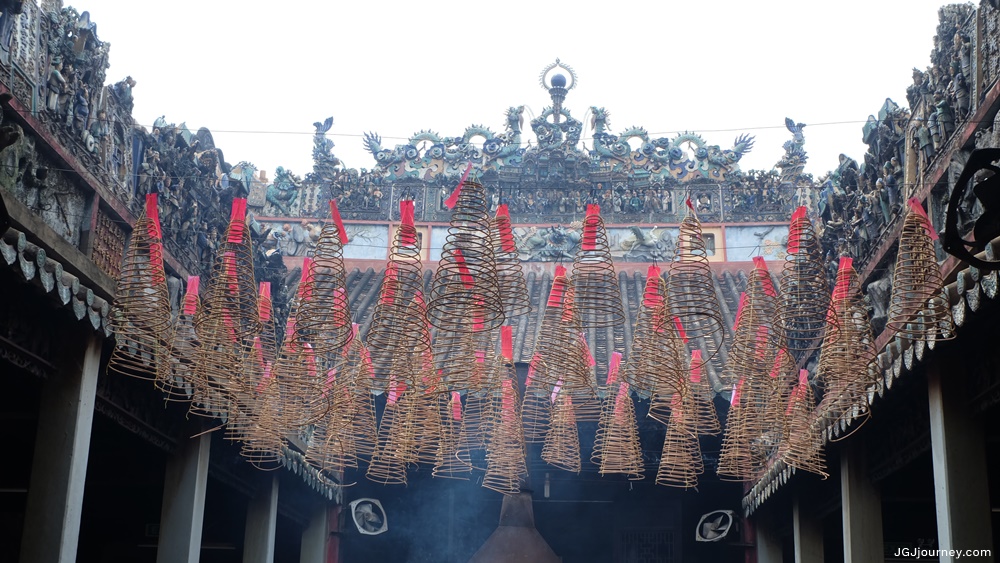
In Thailand, Mazu is called “Chao Mae Thap Tim”. Chao Mae corresponds to Goddess, and Thap Tim is ruby. This name is from her costume. Like Vietnam, Mazu temples also follow in Chinese migrated footsteps across Thailand. Most temples were built near rivers or the sea. One of the oldest and typical Mazu temples is Tianhou Shenbow Shrine or Pun Tao Ma Shrine. It is located at the famous old pier in Bang Khun Tian district, Bangkok.
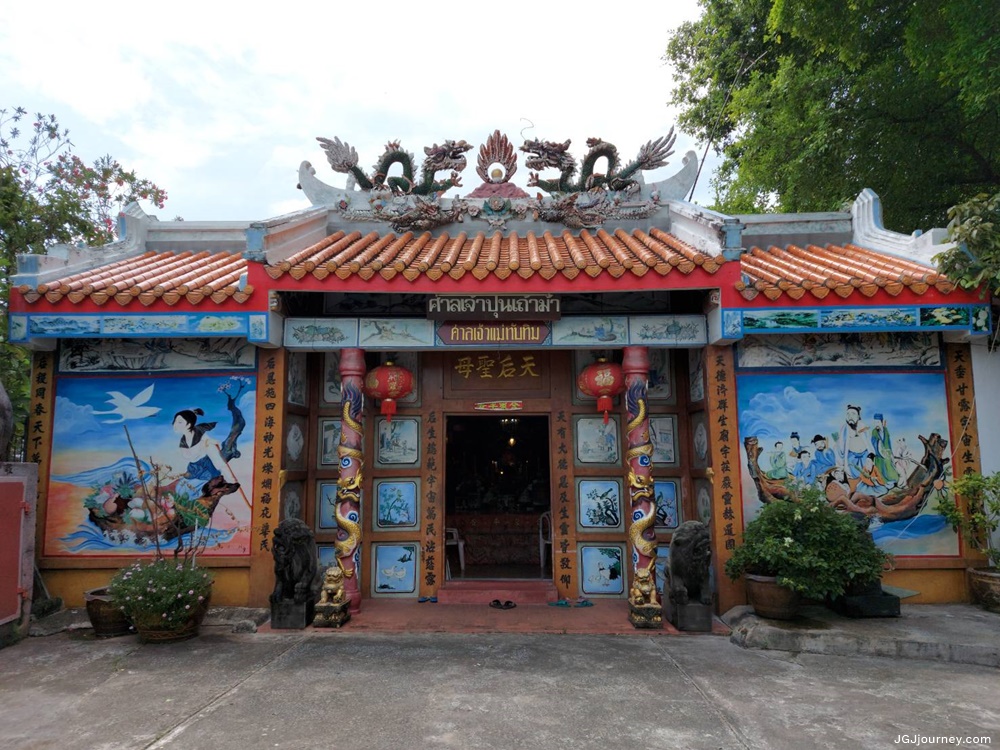
The temple is imbued with Chinese culture from Fujian. It is not only a meeting place for Chinese but also Thai people to pray for peace, success in life, and even for descendants. Thai people often burn incense and offer oranges with clean water. On the day of her birth, people will gather and organize traditional plays.
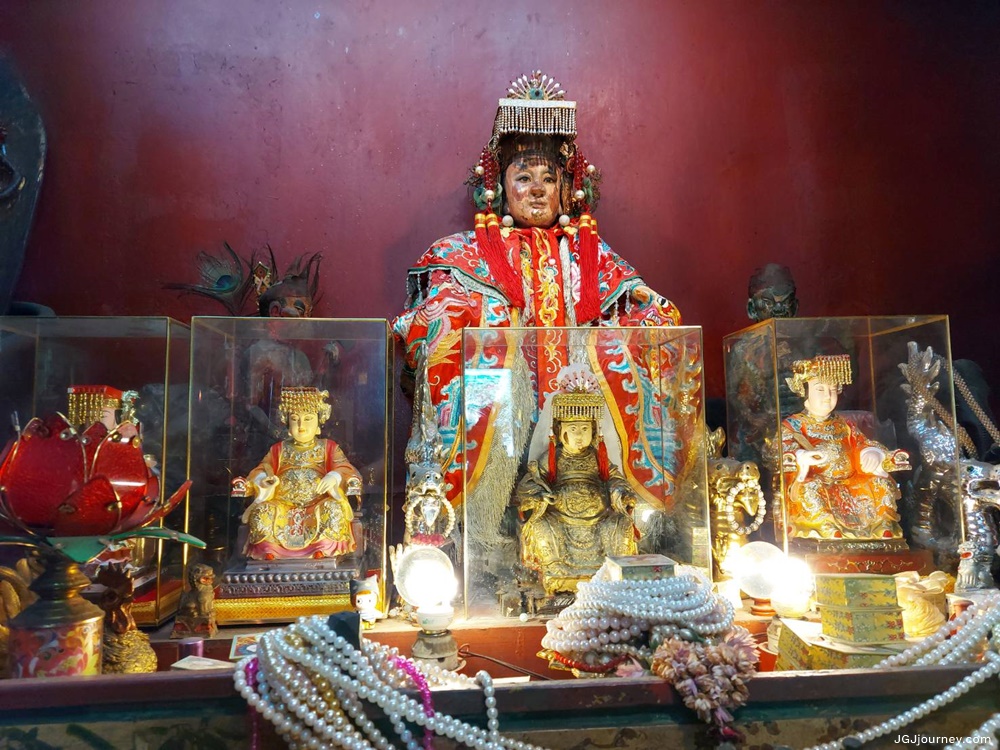
In Taiwan, Mazu is the most important deity in Taoism. However, it is quite strange that we can see many temples that worship a mixture of both Taoist and Buddhistic deities, such as Mazu and Guanyin. It came from milestones in history. Taiwan is an immigrant society. Confucianism, Taoism, and Buddhism follow in the footsteps of Chinese immigrants to Taiwan. In addition, during the Japanese colonial period, Japanese Buddhism was also spread to this beautiful island. Some prevalent Western religions, such as Christianity and Catholicism, are less popular but still attract followers. Therefore, it can be said that Taiwan is a melting pot of diverse religions. Taoism came to Taiwan more than 400 years ago with Chinese migration under the Ming Dynasty and quickly developed in Taiwan. However, during the Japanese occupation, Taoism was heavily persecuted. Many Taoist temples were forced to relocate or share their faith with Buddhist temples. Therefore, statues of Taoist and Buddhistic deities, and even Japanese monks, were worshiped in the same temple.
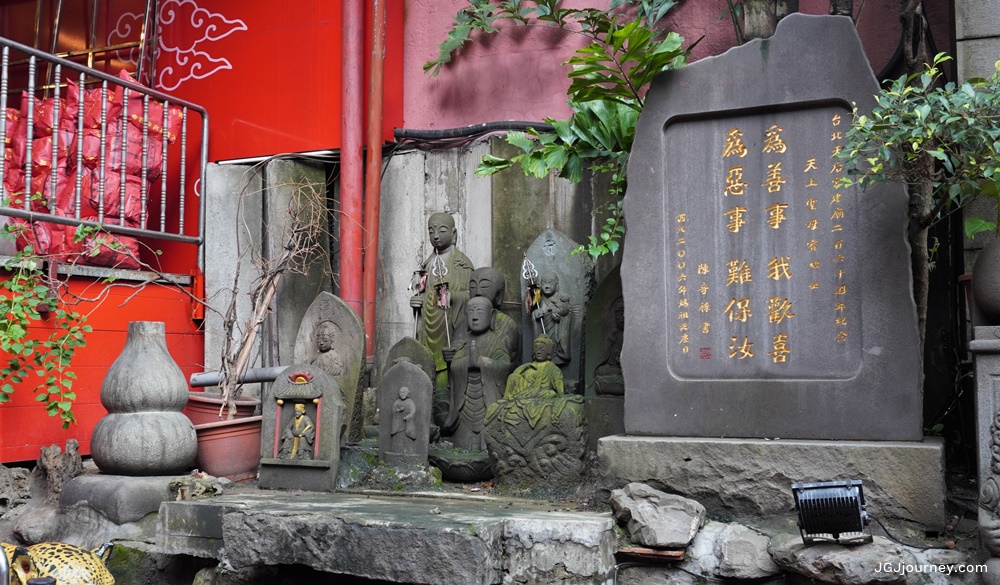
Taipei Tianhou Temple (西門町 媽祖廟) is a particular case. It is not the most ancient structure, but it has witnessed and experienced the ups and downs of the history associated with this island.
Referring to Taipei Tianhou Temple, it will tell about a long history of “Tainan First, Lugang Second, and Mankah the Third.” Commercial growth under the Qing Dynasty made Tainan, Lugang, and Mankah become important ports, leading to the urban formation and a temple culture with immigrants. Mazu is considered the goddess of seafarers, so Mazu temples were built and worshiped near ports and rivers according to Chinese culture and feng shui. The development of Mazu temples in Northern Taiwan was closely correlated with urban development in the Tamsui River area. Guandou Temple is considered the oldest Thien Hau temple in Taipei, built at Tamsui Guandou Gate during the regime of Emperor Kangxi of the Qing Dynasty. Then, the Mazu temple in Mankah (now known as Taipei Tianhou temple) was built under the power of the Qianlong emperor).
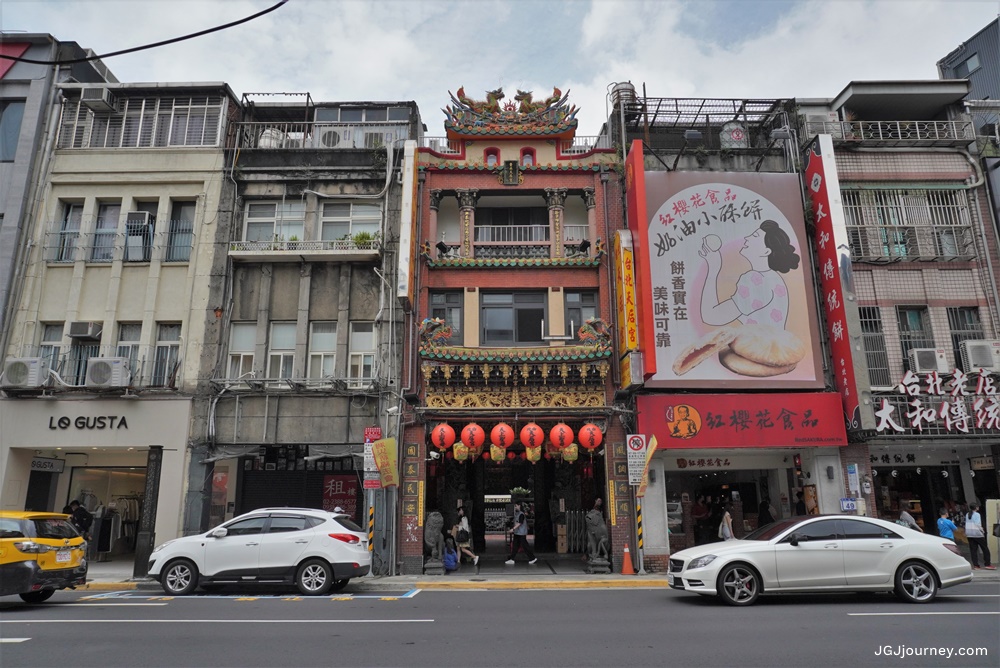
Originally, Taipei Tianhou Temple, named Mankah Xinxing Temple (新興 宮), was built in 1746. According to stories, when a merchant ship docked at Mankah, the ship owner moved the Mazu statue onshore for worshiping. However, he could not bring this statue back to the boat after completing the ceremony, and he believed that Mazu chose this location. When shipping business people living around knew that, they raised funds to build a temple to worship the Mazu statue. According to reports, the former temple was very spacious, with a balcony and a performance area in the courtyard. In 1813, the temple was destroyed in a fire and rebuilt over 12 years (1825). Along with Longshan Temple and Qingsuiyen Zushih Temple, they are considered the Three Great Temples in Mankah.
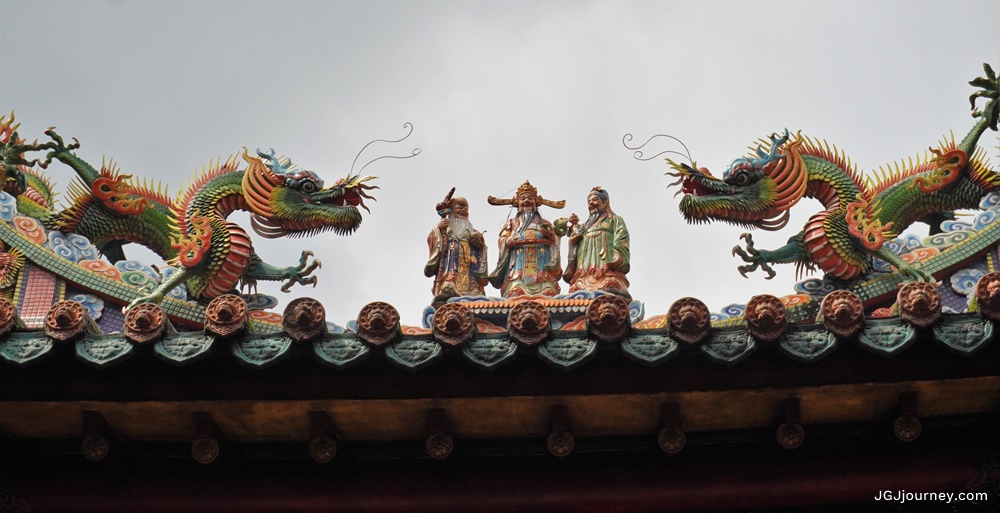
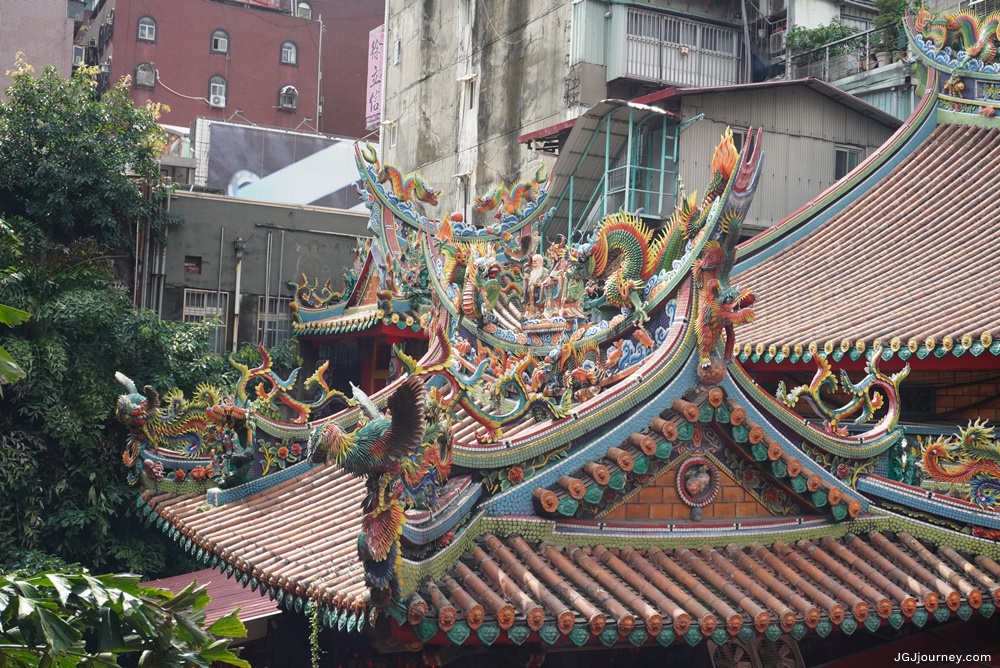
In 1899, under Japanese colonial rule, Japan promoted the Kominka (Japaneseization) movement. The temple was built as a Buddhist temple in the Shingon tradition to spread Japanese Buddhism. In 1910, the temple was renamed Hong-Fa Temple in honor of the Japanese Buddhist monk Kōbō-Daishi. This monk has been worshiped at Mazu temple until now. In 1943, Japan demolished the area’s architecture around the Hong-Fa temple to build air-raid roadwork.
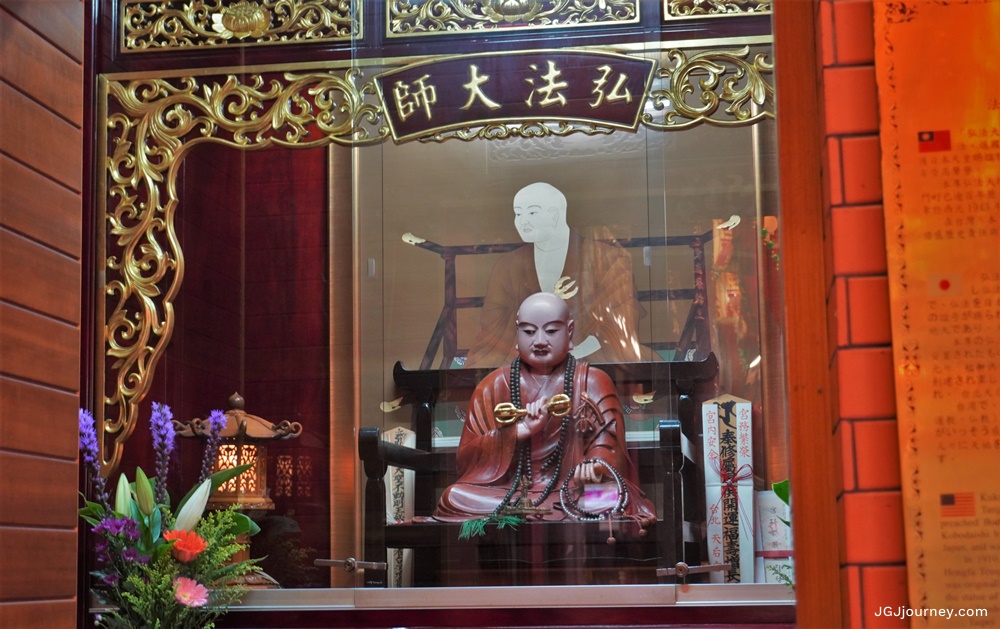
After World War II, Japan withdrew from Taiwan. Local religions recovered and flourished. The government of the Republic of China decided to return the land to the old Xing Xing temple. However, at that time, the architecture of this area was typical Japanese style, which did not match the feng shui of the original Mazu temple. People remodeled the main hall of Hong-Fa Temple to make offerings to Mazu and met with resistance from the missionaries living in Hong-Fa temple. In 1953, a fire destroyed the old temple, allowing the locals to redesign it according to traditional feng shui. In 1959, on the 1000th anniversary of Mazu’s birth, the temple was newly built and opened to the public. In 1967, the government officially named Taipei Tianhou Temple.
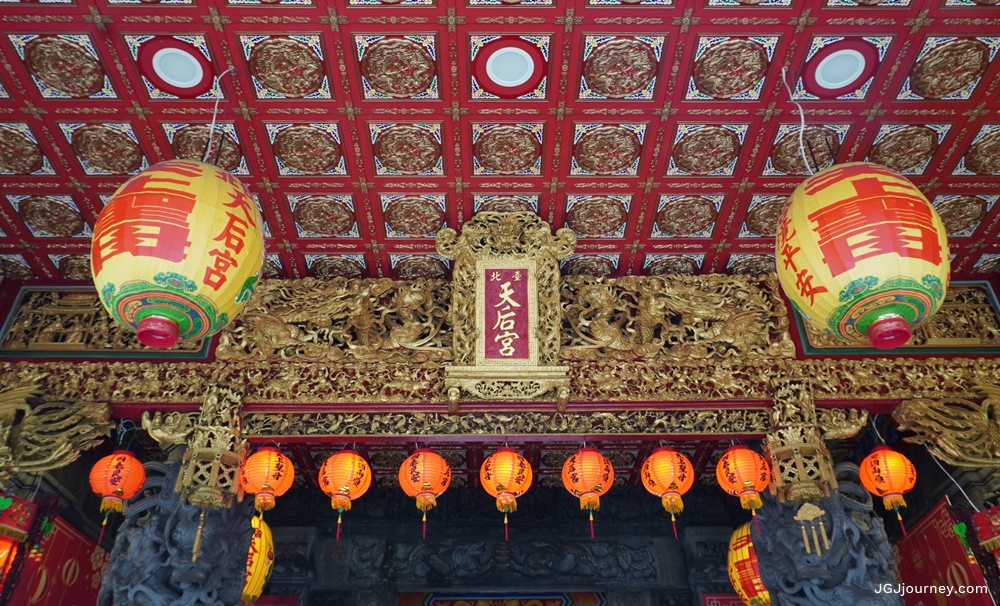
The Main Hall is divided into three parts, like any traditional Chinese temple architecture. The middle worships Mazu; the right side worships Guanyin, and the left side worships Lord Guan. Outer Hall Shrines worship the Tiger Generals and Kōbō-Daishi. The second floor is the Jade Emperor Hall area.
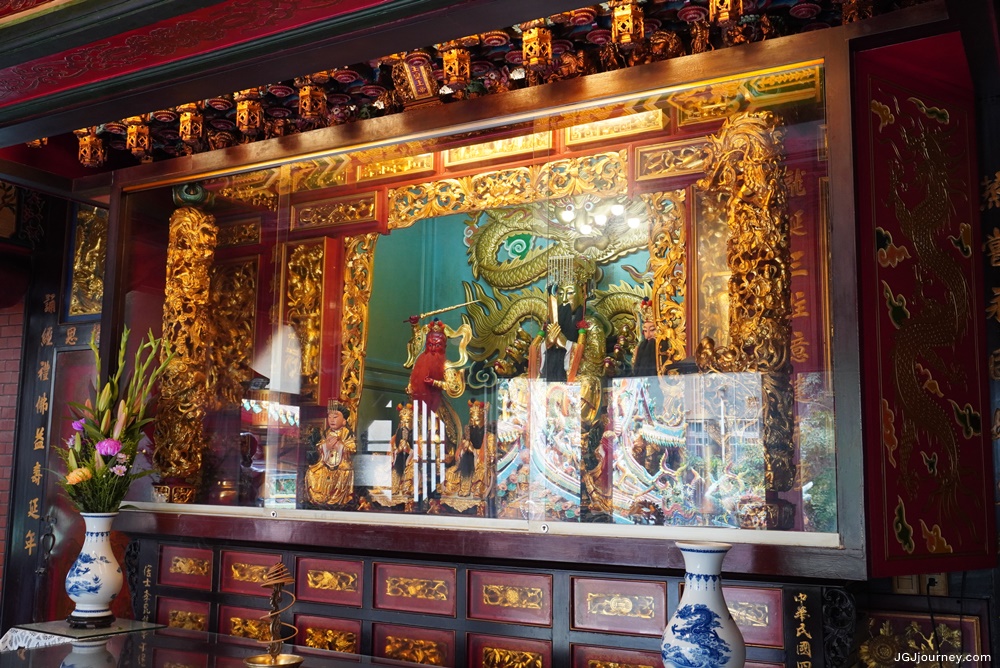
Currently, Taiwan has nearly 1000 Mazu temples. On the anniversary of Mazu’s birth, many Mazu shrines perform pilgrimages every March, bringing Mazu closer to the people. The most famous pilgrimage, lasting 8-9 days, begins at Jenn Lann temple in the Dajia District of Taichung through Changhua, Yunlin, and ends at Fengtian Temple in Xingang, Chiayi County. Many festival activities are organized, such as puppet stand theater performances, displays of embroidered banners, float parades, and dragon and lion dances. Thousands of devotees join this festival and prepare fruits and foods as offerings.
8 Ceremonies will be performed during the Mazu procession, including the Ceremony for Praying Peace, the Ceremony of Sitting on the Sedan Chair, the Ceremony of Lifting the Sedan Chair, the Ceremony of Staying, the Ceremony of Praying for Blessing, the Ceremony for Expressing Birthday Good Wishes, the Ceremony of Sedan Chair Return, and the Seating Ceremony. In the Ceremony for Expressing Birthday Good Wishes, all devotees must perform three kneelings and nine kowtows, which means touching the ground nine times with their heads to show respect to Mazu.
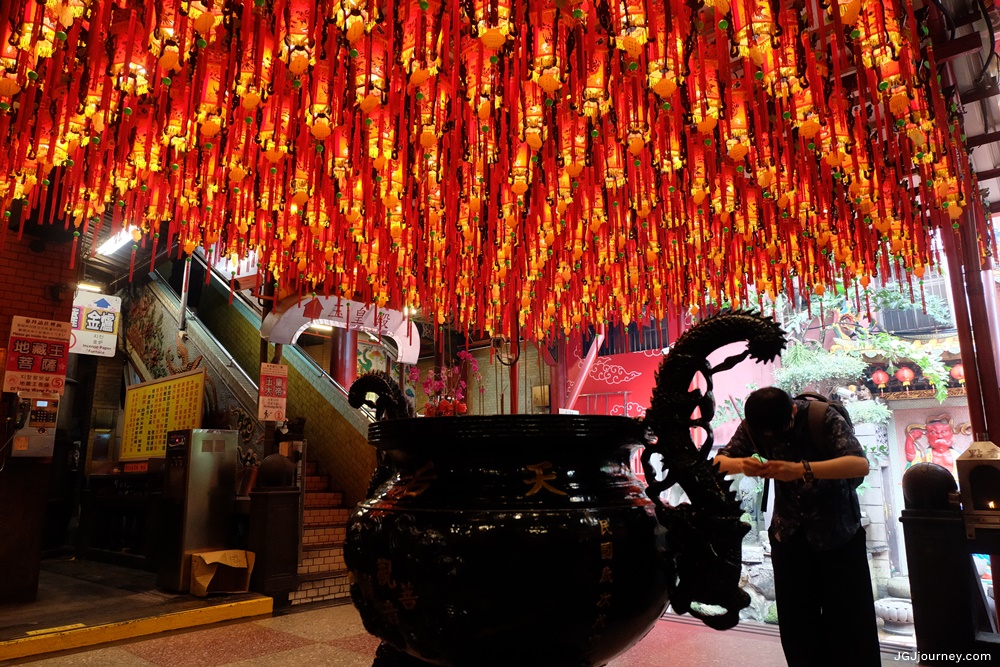
Through this Mazu pilgrimage every year, it can be seen that Mazu is not only the patroness of fishermen but also the patroness of the Taiwanese people. Mazu is associated with the development history of the island of Formosa and has a significant position in the spiritual life of the people.
References:
-
- Taipei Tianhou Temple Website
- Chien-Chien Lo, “Taiwanese Religions and Culture”

